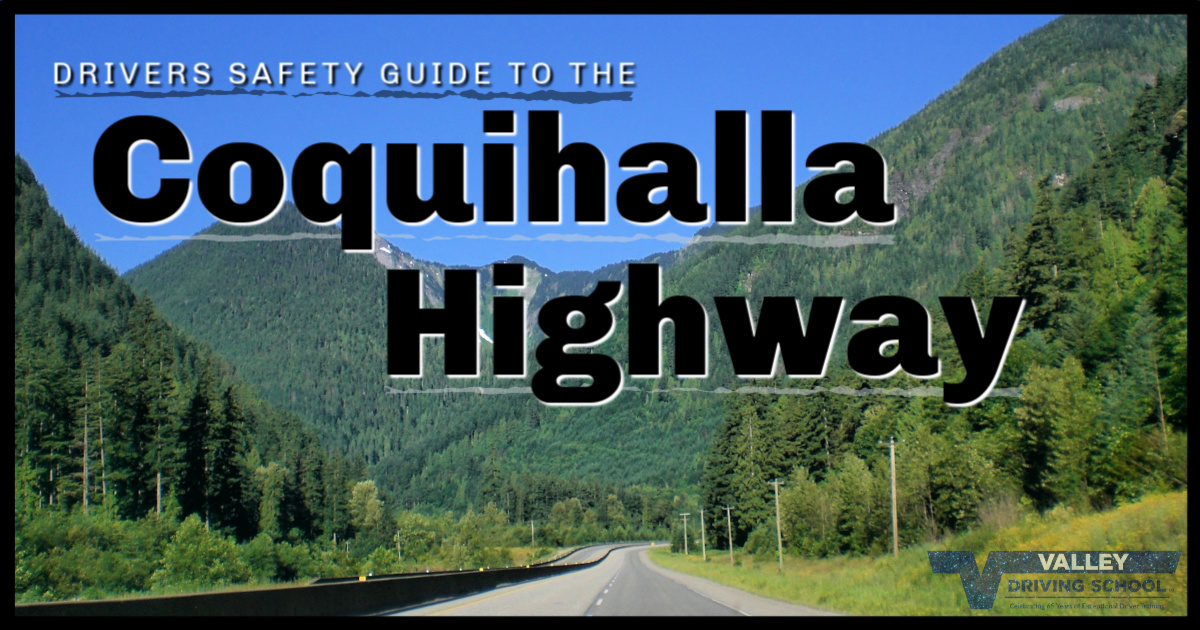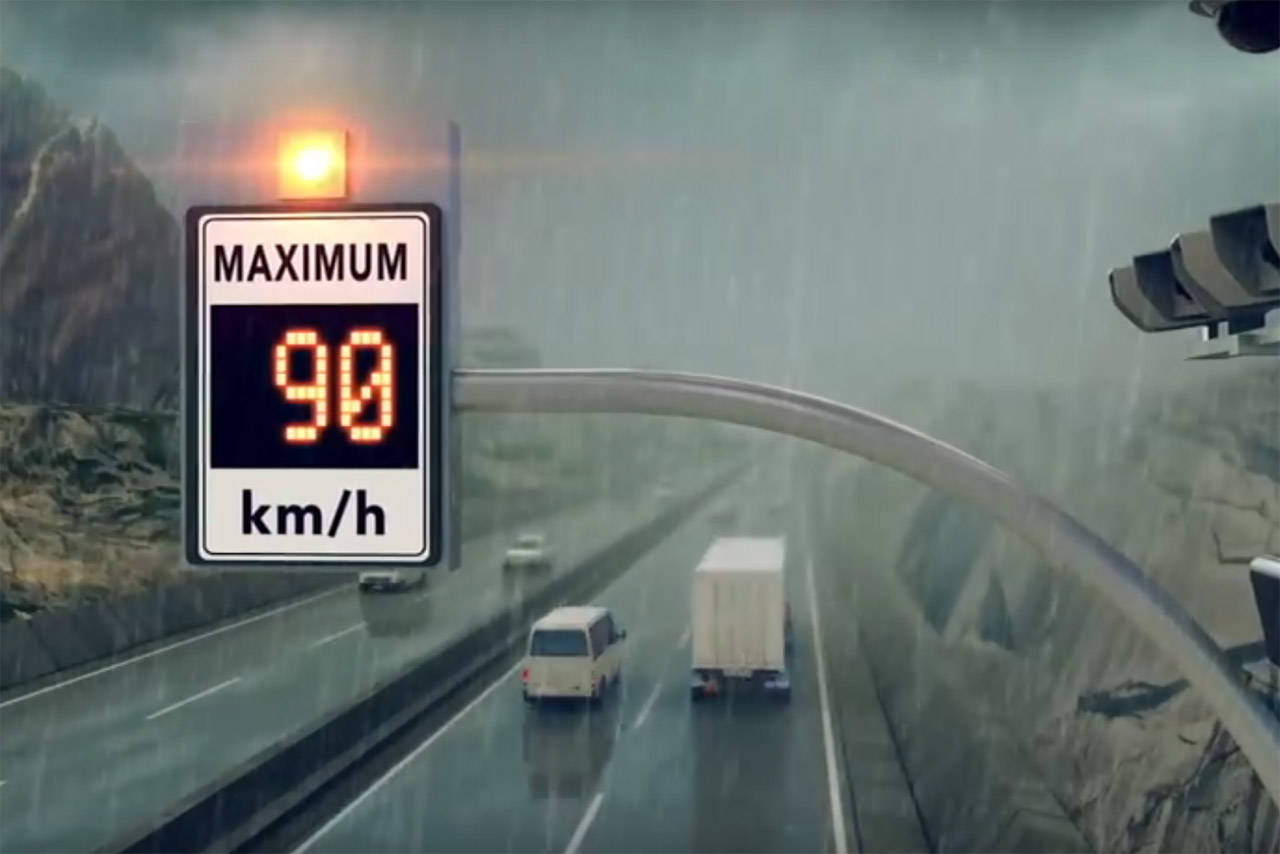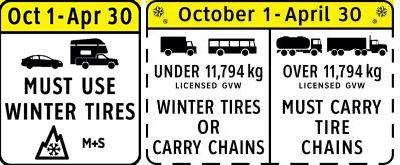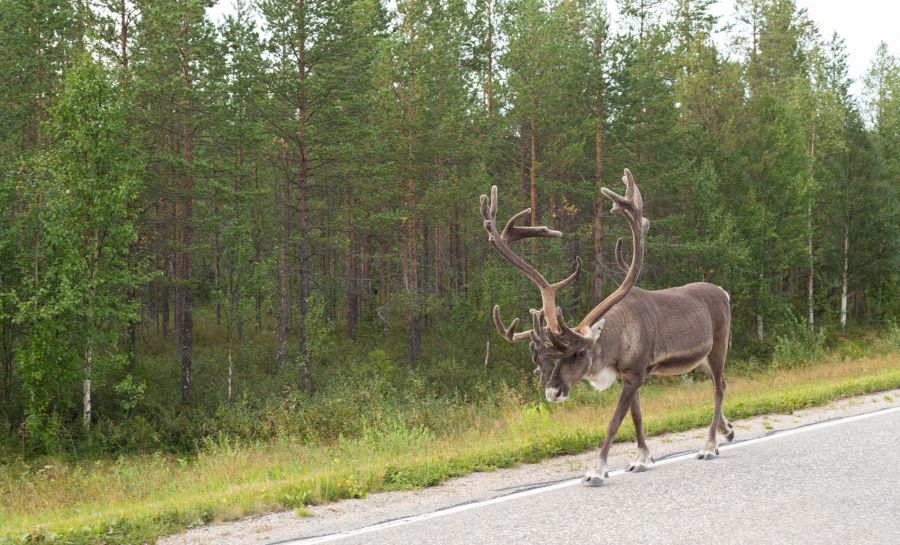Whether you’re a commuter, wine lover, tourist, or commercial driver, you’re likely familiar with the Coquihalla Highway that connects Vancouver and the Okanagan Valley. This 186km stretch of BC’s Highway 5, known for its steep incline and unpredictable weather conditions can surely be viewed as a beautiful, scenic drive through the mountains but should also be treated with caution as ICBC estimates 400-500 crashes every winter season.

The Coquihalla Highway is a mountain pass which means unpredictable mountain weather throughout any season. Snow and ice have even been known to accumulate during summer months! There’s no shortage of road signs that warn drivers to be aware of this climate as unexpected fog, storms, flooding and avalanches commonly take over the beauty of this highway quickly.
Plan Your Route

While we can never predict how the weather will behave for the duration of any of our drives, a good habit to get into is checking highway conditions and any available highway webcams before leaving for your trip. DriveBC is a great resource that will provide you with this information so you can quite literally see what you’re driving yourself into and decide whether or not you’re feeling up to it, choose another route, or if the trip to grandma’s is worth it.
If this is the first time you’ve ventured far from home, you may never have come across variable speed limit signs. These signs aren’t speed radars, but electronic signs that display the speed limit and adjust the speed limit according to conditions. Be requiring drivers to slow down in bad weather, it will help reduce the frequency and severity of weather-related incidents.
Drivers will notice overhead message signs to inform drivers of the use of variable speed limit signs in the area, as well as flashing amber lights to alert drives that speeds are to be adjusted from the regularly posted limits.
Winter-Ready Vehicles

Of course, with conditions like these, doing a check to ensure your vehicle’s headlights and taillights are in good working order is advised, and being equipped with winter tires for mountain roads like the Coquihalla’s is required. Some routes require chains for commercial vehicles during the months spanning October 1 – April 30. At minimum, the BC Ministry of Transportation recommends a tire tread depth of 3.5mm, something to note when shopping for your next set of wheels.
Driving Conditions
Adjusting your driving to these swiftly changing conditions is also advised no matter how much you’re wanting to go sledding/snowboarding/eat grandma’s turkey dinner. Grandma will appreciate that you’ve slowed down, rather than maintained a speed that risks you missing more than just the one dinner. Remember to keep to the right lane, or travel lane, unless you are overtaking and passing another vehicle.

While travelling along any road, but especially the mountain passes in British Columbia, you should be on the lookout for wildlife. Wildlife in the BC wilderness are rampant all year long, even when you think they may be hunkering down for the winter, and can be a major hazard on the roadways. If you see an animal on or near the roadway while driving, the first thing you should do is ease off the accelerator and cover the brake pedal. Look for an out.... space alongside the roadway. Check your rear-view mirror for vehicles approaching from behind and watch for oncoming vehicles. Brake and steer as necessary to avoid contact with the animal or other vehicles on the roadway.
If you have made every attempt to avoid the animal but a collision is inevitable you need to look where you want to go and not at the animal. The ICBC Learn to Drive Smart manual states “If the animal is large and you can’t stop in time, brake firmly and steer to strike the animal at an angle. Let up on the brake pedal just before hitting the animal. This will cause the front of your vehicle to rise and reduce the chance that the animal will come through the windshield.”
Be Prepared
In the worst-case scenario that you need to pull over until conditions improve, or should you face a vehicle breakdown, packing an emergency bag with extra clothing, winter boots, blankets, candles, food, and water is something you’ll want to take the time to do before hitting the road. There is no shame in pulling over if you are feeling anxious, nervous, or tired as this impacts your driving ability. Having your cellphone fully charged, a car charger, and a battery pack will help you not only stay entertained, but contact others to let them know what your situation is, where you’re at, and plan accordingly.
Let a friend or family member know your route and planned arrival time. In the event you have an issue and are out of cell service or are unable to make a call for assistance, someone will know that something could be wrong. Knowing about where you are along the route could mean that assistance will be on they way sooner than if no one knew of your whereabouts.
Another factor to keep in mind is that the highway’s incline climbs up the Coquihalla Pass, reaching an elevation of 1.244m (4,081ft) above sea level which means it takes a toll on your gas tank. Making sure you have a full tank of gas at the start of your voyage may keep you from seeing that fuel light go on and finding yourself on the side of the road needing to pull out the emergency bag you packed, or having to contact roadside assistance.
--
No matter the season, with the proper precautions and safety in mind, the Coquihalla Highway can be an enjoyable drive like any other. Or if nothing else, at least a little less stressful. Sneak a peek at those online road conditions, ensure your vehicle’s lights and tires are ready, you’re fueled up, emergency bags are packed, and then you can hit the road, Jack!

